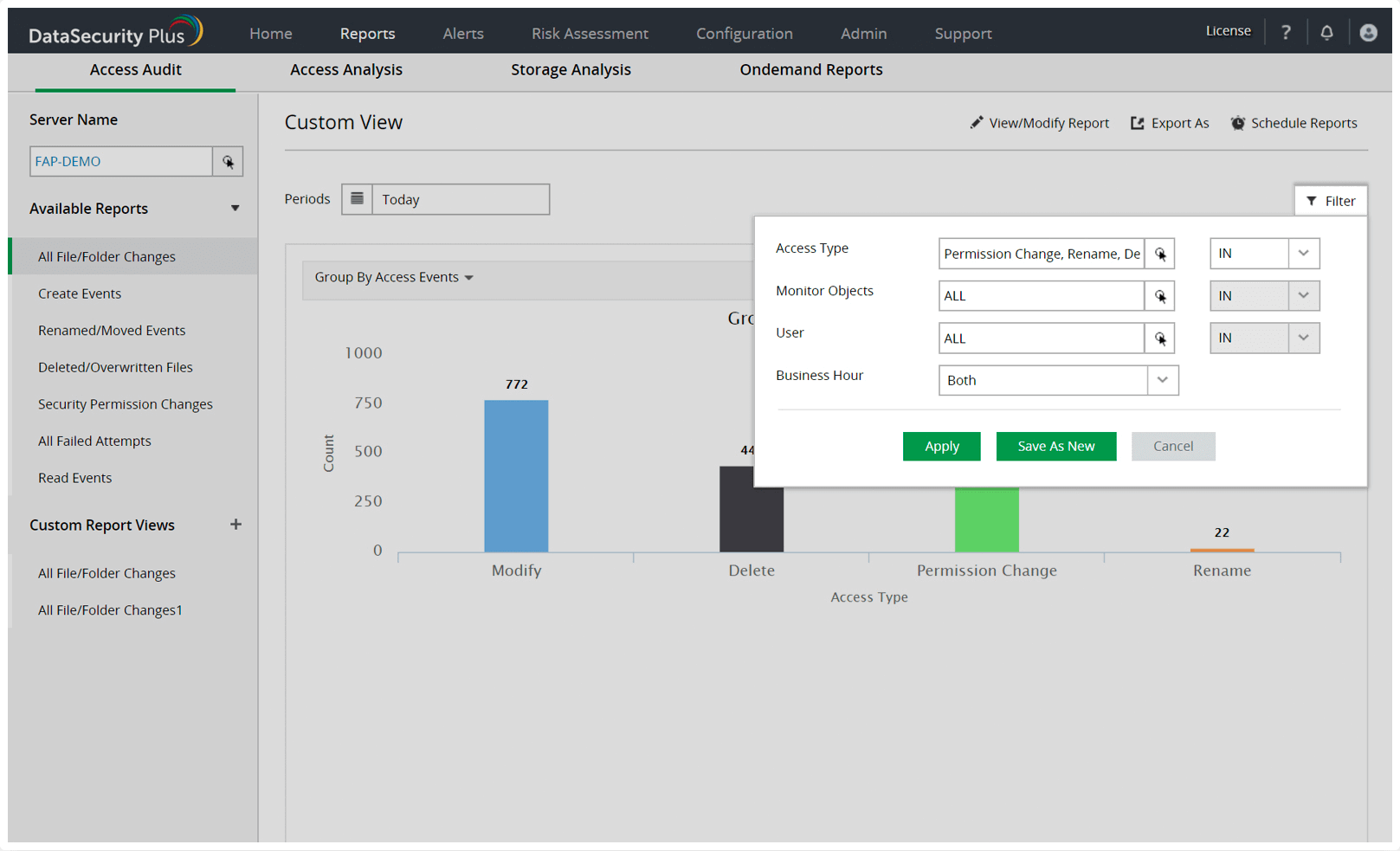

Now that we’ve configured the Advanced Audit Policy and the Challenges with Interpreting Critical Access Events For the purpose of this blog, we will monitor all access attempts by all users through the “Everyone” group.
#File monitor vs audit windows
Figure 3: Basic Audit Policyģ) Navigate to Computer Configuration –> Windows Settings –> Advanced Audit Policy Configuration –> Audit Policies –> Object Access Figure 4: Advanced Audit Policy ConfigurationĤ) Double click “Audit File System” and select “Configure the following audit events”, “Success”, and “Failure” Figure 5: Audit File SystemĦ) Double click “Audit Handle Manipulation” and select “Configure the following audit events”, “Success”, and “Failure” Figure 6: Audit Handle ManipulationĨ) In “Group Policy Management”, link the newly created GPO with the OU containing your file servers by right-clicking the OU and selecting “Link an existing GPO…”, followed by “Group Policy Update” Figure 7: Link Group Policy Objectĩ) Navigate to the properties of the Security log on the target Windows File Server to configure the “Maximum log size ( KB )” and event handling setting in the case the event log size is reached Figure 8: Security Log Propertiesġ0) Configure the SACL by navigating to the security tab of the target folders’ properties, clicking advanced, navigating to the Auditing tab, and clicking Add Figure 9: Folder SACLĪssuming these folders contain your organization’s most critical assets, you most likely want to monitor access events from all users.
#File monitor vs audit full
While “Audit File System” allows you to audit user attempts to access file system objects, without configuring “Audit Handle Manipulation, you will not have full visibility into failed access attempts. Provides a single setting for “object access”, while the advanced policyįor our use case, we will need to enable the following sub For the case of auditing file access, the basic audit policy Number of events to be returned than they would be able to with the basic audit Windows Vista, allow administrators to be more selective in the types and For the purpose of this blog post, we will enable an advanced audit policy through Group Policy on a Domain Controller running Windows Server 2016 R2ġ) Create a new Group Policy Object through Group Policy Management and provide a suitable name Figure 1: Group Policy ManagementĢ) Right Click the newly created GPO which will launch the Group Policy Management Editor window Figure 2: Group Policy Management EditorĪdvanced Audit Policy Configurations, first introduced in

The audit policy can be enabled through Group Policy from the domain level, or via Local Security Policy in the case of a single file server.

Through the volume of data to understand who is accessing what.īefore enabling an audit policy, make sure to: The volume of events, and the more difficult it is for the admin to parse Server has to do to log the events, the more storage is required to accommodate Settings chosen and the more files and folders audited, the more work the file Impact caused by “over auditing”, configuring a wider audit scope than is Of your use cases and business needs are a must to avoid the possible system
#File monitor vs audit how to
In this post, we will dive into how to configure file access auditing on a Windows File Server, and will take a closer look into the challenges with interpreting critical access events.Īs with any effective audit strategy, a good understanding In our first post of the series, we discussed some of the challenges with native file system access auditing techniques, from the configuration all the way to one’s ability to easily understand the resultant data. Sign up now for the webinar “ Challenges with Relying on Native File System Logging“. Note: This blog is the second in a 4 part series, followed by a webinar to review all the challenges with File System access auditing.


 0 kommentar(er)
0 kommentar(er)
